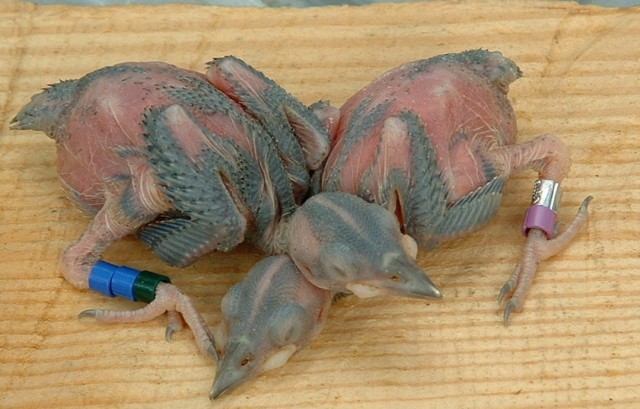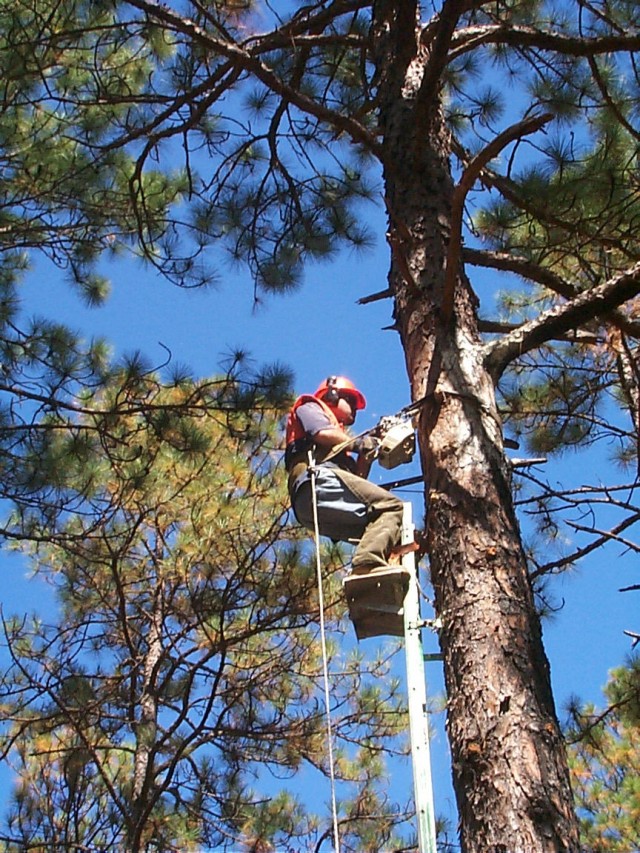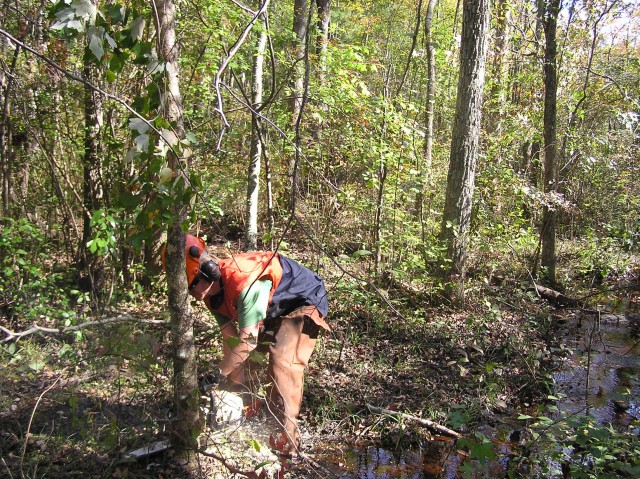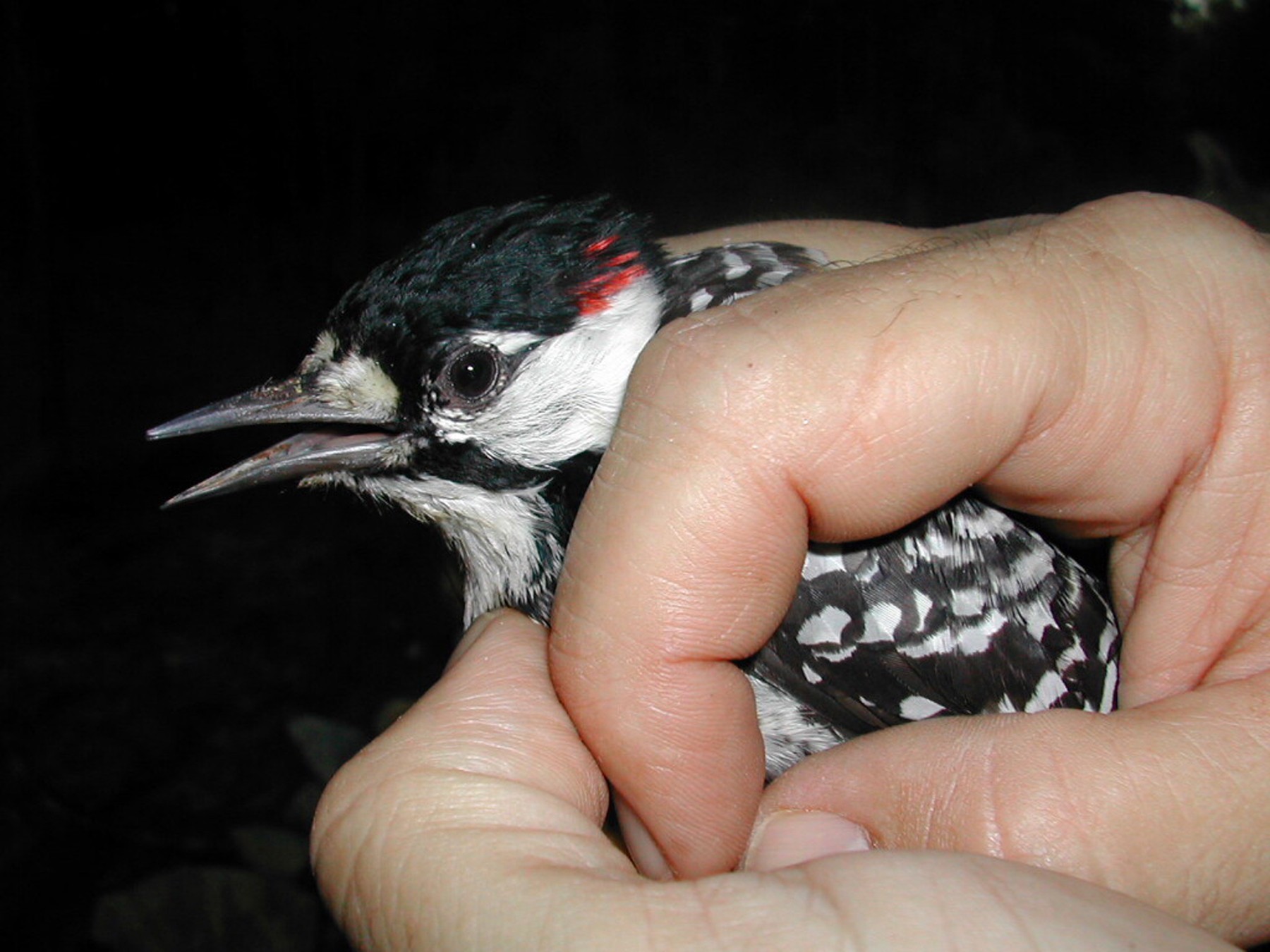ABERDEEN PROVING GROUND, Md. - Any Soldier who's ever been stationed at Fort Bragg, N.C., is familiar with the Red-Cockaded Woodpecker. This year, the installation won the Secretary of the Army environmental award for natural resources conservation in part because of the way they protect this little bird.
In January 2009, more than 3,100 acres of previously restricted land became available for maneuver training use due to the recovery, monitoring and the management plan established at Fort Bragg years ago to protect the Red-Cockaded Woodpecker.
"By protecting this bird, we have ensured Fort Bragg can continue to meet the needs of the Army and Department of Defense," said Col. Stephen Sicinski, Fort Bragg's garrison commander. "This took a total team effort to maximize the knowledge, capabilities, skills and opportunities to successfully and innovatively accomplish this task."
After more than 70 years of military operations on Fort Bragg, the U.S. Fish and Wildlife Service restricted activities there in 1990 to provide protection for the Red-Cockaded Woodpecker, whose number had dwindled in the region to only a few hundred breeding groups.
In response, Fort Bragg established a cross-functional team comprised of environmental, public works and training range staff, who balance the requirements of the installation's mission with its natural resources stewardship efforts. Fifteen years later Fort Bragg and their partnering lands met the recovery goal for Red-Cockaded Woodpecker potential breeding groups.
The team continues to execute a rigorous program of habitat management, species monitoring and community education, and the Red-Cockaded Woodpecker continues to thrive as an accepted environmental success story.
"It is important to continue aggressive management because if the Red-Cockaded Woodpecker population continues to thrive, restrictions should be reduced further," said Jackie Britcher, chief of the Fort Bragg Endangered Species Branch.
She explained it is not only important to continue aggressive habitat management but to also continue intensive monitoring to evaluate the health of the Red-Cockaded Woodpecker population and document population trends.
"Artificial cavities are woodpecker-specific but other habitat management is ecological at landscape level and valuable to other endangered, threatened, rare and native species," Britcher said. "A healthy ecosystem is critical for supporting quality training lands."
Fort Bragg has transferred the lessons they've learned to other military installations the Red-Cockaded Woodpecker calls home. Because of their success, they are also able to physically transfer birds to other installations to help the region-wide recovery without hurting their own population recovery efforts.
It took several teams working in concert to bring about the increases in the Red-Cockaded Woodpecker population and installation's ability to host meaningful, realistic training at Fort Bragg.
The installation's Endangered Species Branch monitors, surveys and protects the woodpecker population. The Forestry Branch restores the woodpecker's habitat through prescribed burns during the growing season, timber stand improvement, replanting with native species, controlled burning, and hardwood mid-story removal. The Wildlife Branch is also part of the team, enforcing the applicable regulations.
The Master Planning Division and Environmental Management Branch staffs collaborate to ensure impacts to the environment and to operations are minimized or avoided. Those responsible for military readiness are directly involved in decisions regarding natural resource management.
Biologists, trainers and range officers ensure Soldiers adhere to the range regulation restrictions and the environmental management staff coordinates consultations with the U.S. Fish and Wildlife Service and prepares biological assessments, reports and briefings to ensure compliance.
Monthly classes educate incoming military and civilian personnel. Participation in local community activities, such as nature fairs, field days, and children's festivals help keep the installation's neighbors aware of their efforts.
The community, mission and environment are all connected. Everyone has a stake and is committed to protecting the Red-Cockaded Woodpecker.
According to Britcher, if the woodpecker population trends continue, prior to the 2012 breeding season protective markings and training restrictions can be removed from the vast majority of Red-Cockaded Woodpecker habitat on Fort Bragg.
Teams working in partnership, community outreach and stakeholder involvement have been the key to Fort Bragg's success in the past and will ensure the installation has a future where birds can live and Soldiers can train in harmony.
An independent panel of judges comprised of professionals from federal, state and Army organizations recommended Fort Bragg for the award. The Secretary of the Army Environmental Awards represent the highest honor in the field of environmental science and sustainability conferred by the Army
Deputy Assistant Secretary of the Army for the Environment, Safety and Occupational Health Tad Davis recognized Fort Bragg and the winners of the other eight categories as the best examples of how environmental stewardship and sustainability play a crucial role in the Army's mission readiness.
"The Army recognizes successes that demonstrate mission-driven solutions that protect the environment at installations here and overseas. Whatever we do needs to revolve around supporting the mission, taking care of our Soldiers, civilians, and Families," said Davis. "In simplistic terms the Army, our Army, your Army - is building green, buying green and going green. These winning environmental programs make the Army sustainable thereby impacting generations to come."


















Social Sharing